Updated: 10 Mar 2016
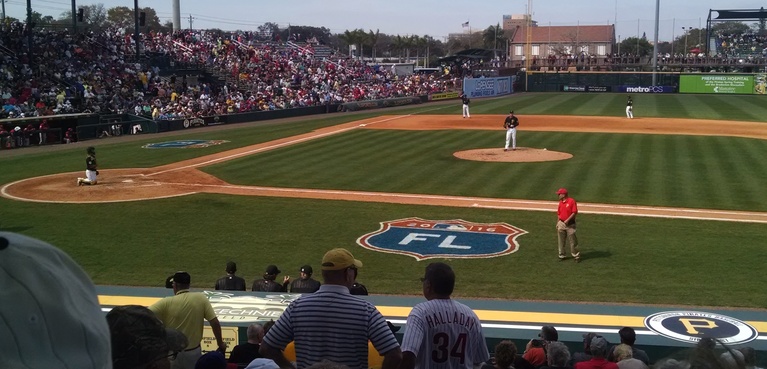
Spring training wasn’t good to us. We went to a Pirates – Phillies game which had to be the most boring game in the history of the world. The Phillies won, 1-0, and there were 14 hits overall. Then we discovered that Red Sox nation had conspired to buy up all the tickets to the Pirates – Sox game. So, we had to find other things to do.
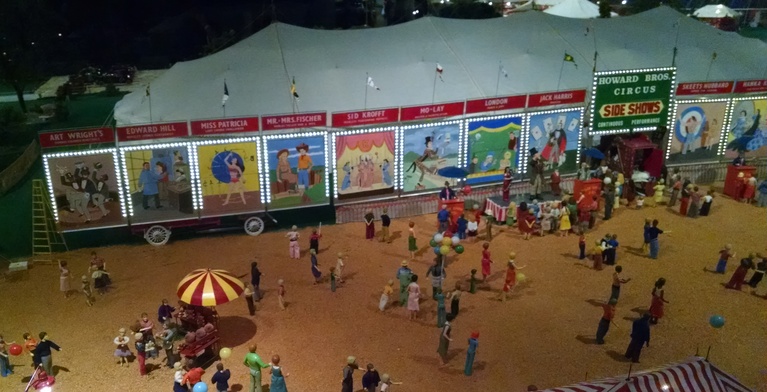
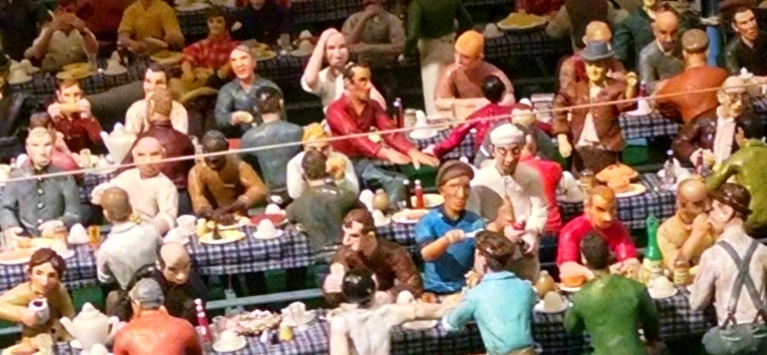
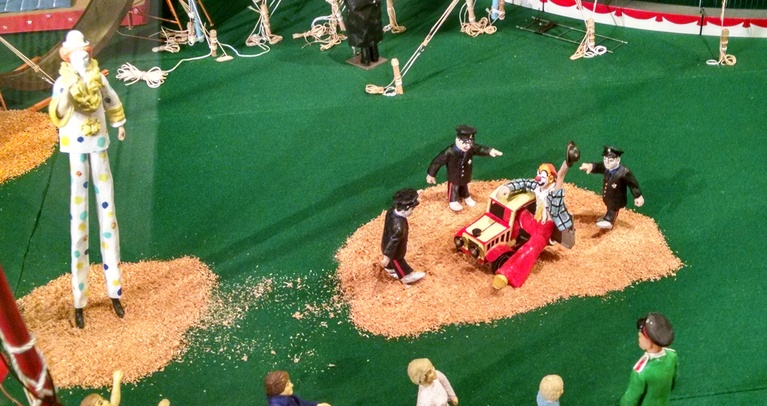
First was The Ringling Museum in Sarasota, the former estate of John and Mable Ringling. The favorite here was the circus museum which is part of the complex. The main building had a wonderful model of the circus coming to town in the 1920’s. It started at the train depot with unloading flatcars of tent poles, tarps, animals and carriages. Next was the “back yard” with a cooking tent, a dining tent, a barbershop tent, several personal tents for the name performers, a hospital tent, some costume changing tents, and the performers’ entrance. Then it was out front to see the sideshow, menagerie, and the big top. Finally, behind the big top was more back yard with tents for the animals, a blacksmith shop, and animal food prep. The model covered 38,000 square feet and was amazing in its detail.
At the time, the circus was an enormous production, and it came to town for one day. A train would arrive a day or two in advance with people to put up posters and sell tickets. The next train would arrive early in the morning of show day with tents and poles, equipment, and a bunch of workers and draft horses to set up the tents. Then the big train, with the performers, the animals, the carts, costumes, musical instruments etc. The setup people and horses would sleep until the show was finished. Then the performers slept while the first crew tore down the tents, loaded tents and equipment on the flatcars, and headed for the next location to repeat the whole process. The circus carried everything it needed except fuel and water, including food, generators to run the lights, and all the support people.
The museum told the circus story and included many artifacts, costumes, and videos of performers. It also had another model of the “spectacle”, the parade of carriages, people and animals all in fancy dress which began every performance. We smiled the whole time we were there.
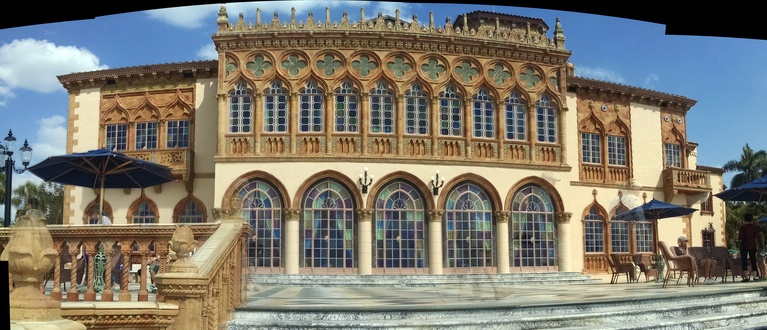
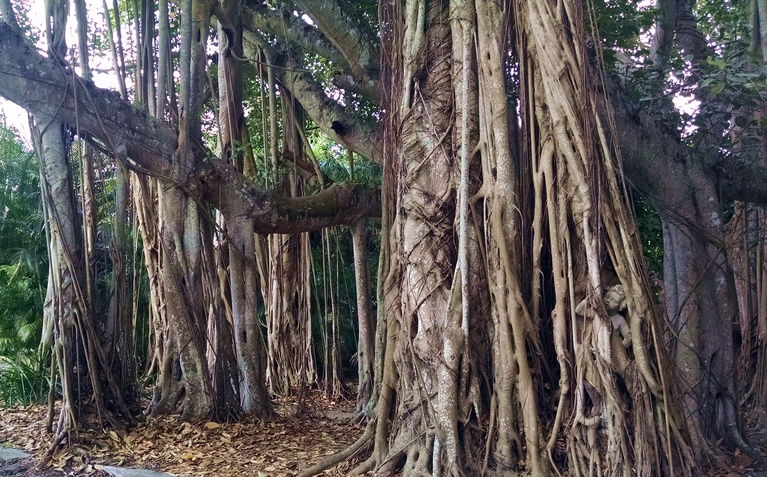
Besides the museums, there is a large rose garden and the Ringling’s home. The road to their home (seen above) is lined with statues and a number of large banyan trees, some spanning the road. Banyans are in the fig family and start out as seeds that find themselves attached to a host tree. Commonly, they will eventually strangle their host and the center of the banyan tree will become hollow as the host rots away. As the little cherub above is finding out, it isn’t always another tree that gets strangled.
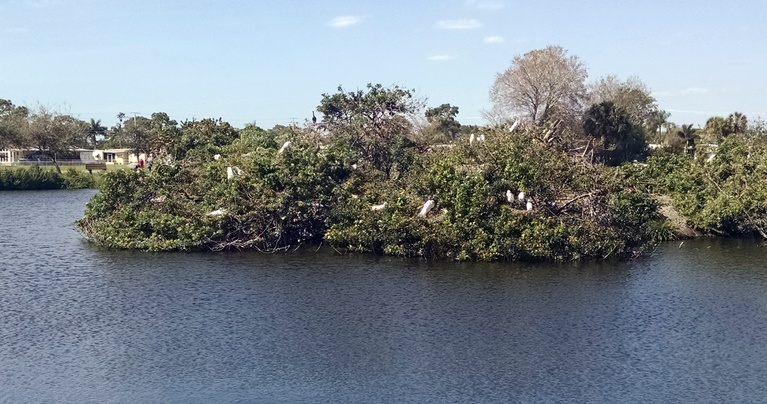
The next day we visited the Audobon Society rookery in Venice. This is a small lake with a tiny island in the center. Many birds nest on the island – we saw adult and juvenile herons and egrets, a bunch of anhingas dozing in the sun, and a pelican. One blue heron parent arrived at the nest, apparently without a fish. The juvenile squawked and fluttered his wings, then he poked his parents legs with his beak, then he managed to climb up the poor parent’s neck and attempt to stuff his head in the beak. The parent finally had to fly off. Next time I’m sure he’ll bring a fish! This spot is busiest just before sunset when the birds come in to roost, but during nesting season there’s something going on all the time.
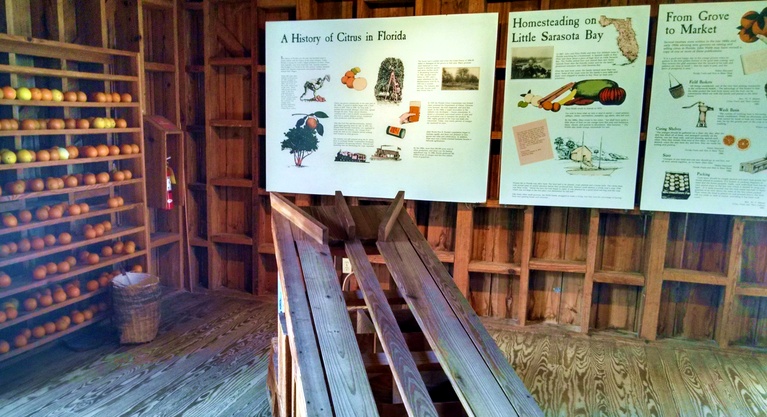
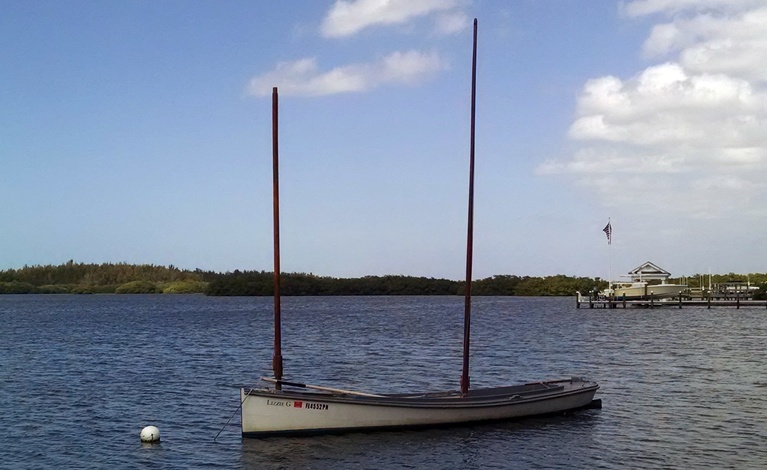
On our last day here we went to Historic Spanish Point. It was originally used by Native Americans, who left enormous shell mounds called middens, basically trash heaps. The Webb family built a homestead here, growing vegetables and citrus which they packed in crates and shipped on their own boat to Key West. A boatbuilder named Frank Guptill married the Webb’s daughter Lizzie, built them a larger boat, then started a boatbuilding business. Today there are reconstructed cottages, a packing shed, a boat shop, a couple of replica boats, a section of shell mound that has been excavated, and one original house constructed by Mr. Guptill. He used turpentine pine and heart pine, so his house (one of only two original structures), survived, unlike other original buildings which collapsed due to insects and decay.
Volunteers at Spanish Point have built several Sharpies, flat-bottomed sailboats common to the area’s shallow waters, using local materials and period techniques and tools. One, the Lizzie G is shown above just below the Guptill house.
Original: 29 Nov 2015
Oscar Scherer sits in the middle of the 10.5-mile Legacy Trail between Sarasota and the Venice Train Depot. Your ride can be extended another ten miles on the southern end by following the Venetian Waterway Park Trail at the depot down to Caspersen Beach where we saw an adult male Bald Eagle. Both trails have a number of access points at parks and parking lots. Water and restrooms are provided at many. Both trails are flat and well maintained with the exception of the US-41 crossing. There it rises to the bridge over the highway rather abruptly in steps that are more interesting on the way down than on the way up.
This location also provides very convenient access to downtown Venice. The side trail ends at the Venice Theatre. There you can leave your bikes at any of several racks around Centennial Park across the street from the theatre and stroll along the shops on Venice Avenue.
Oscar Scherer was quite crowded over the holiday weekend. Sites were somewhat smaller and less private than some other nearby Florida State Parks but still quite satisfactory. Bath houses ran out of hot water at busy times on both mornings of our stay. At other times the water temperature seemed to be fine.